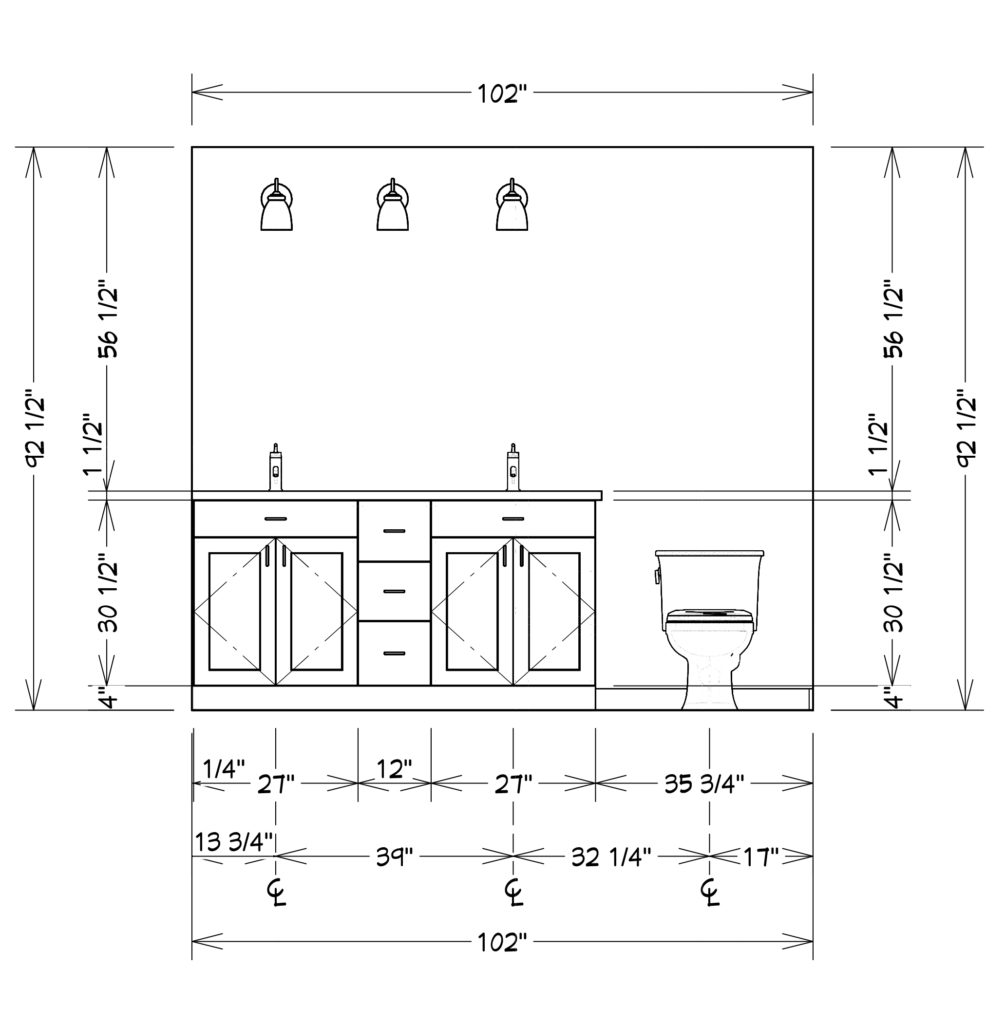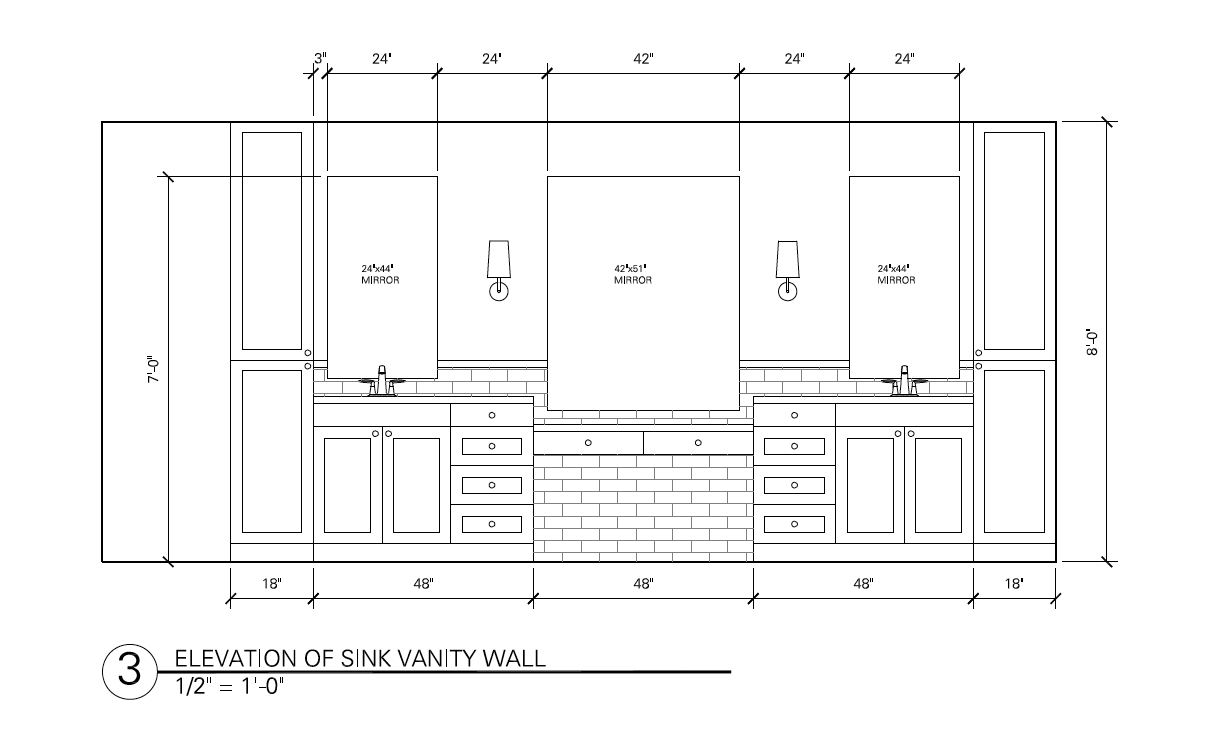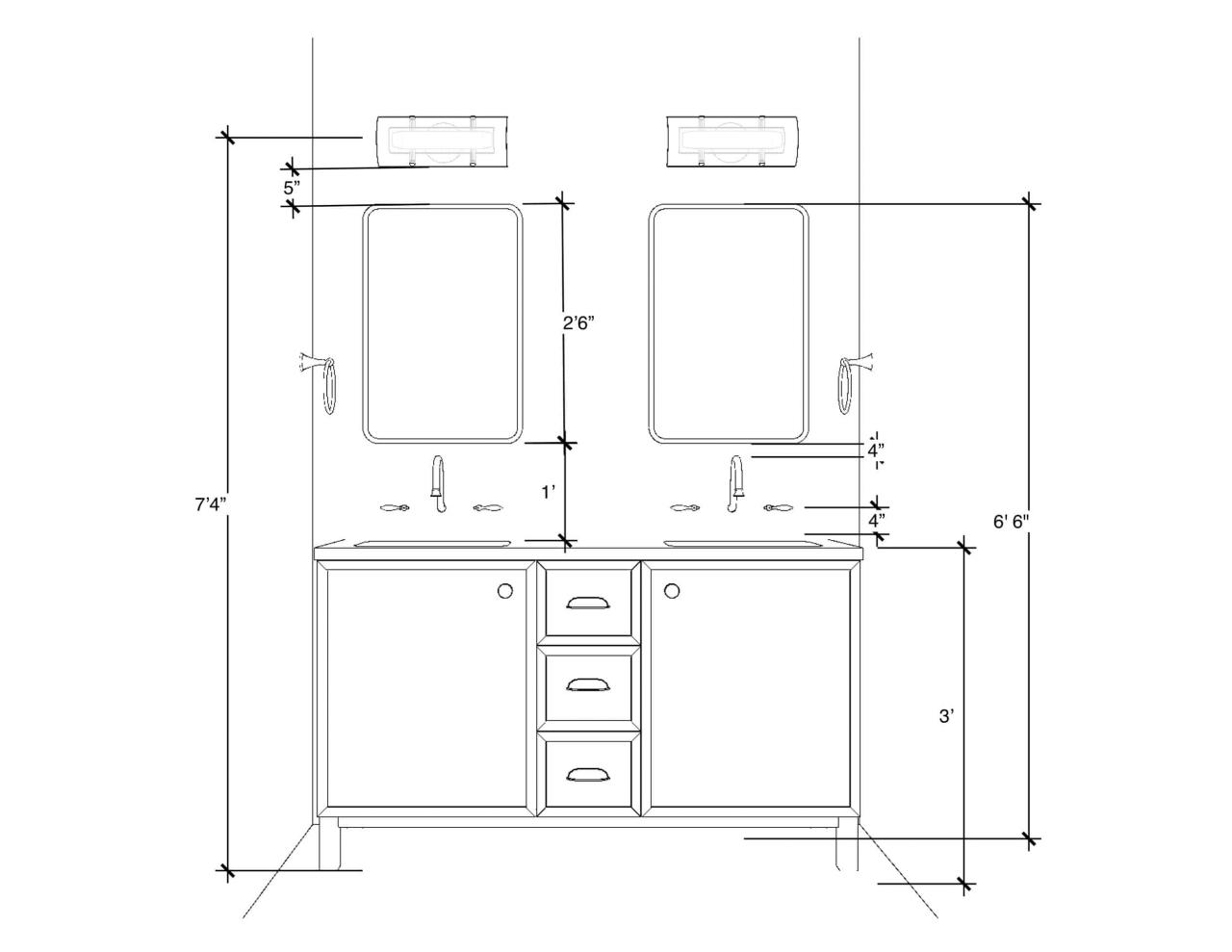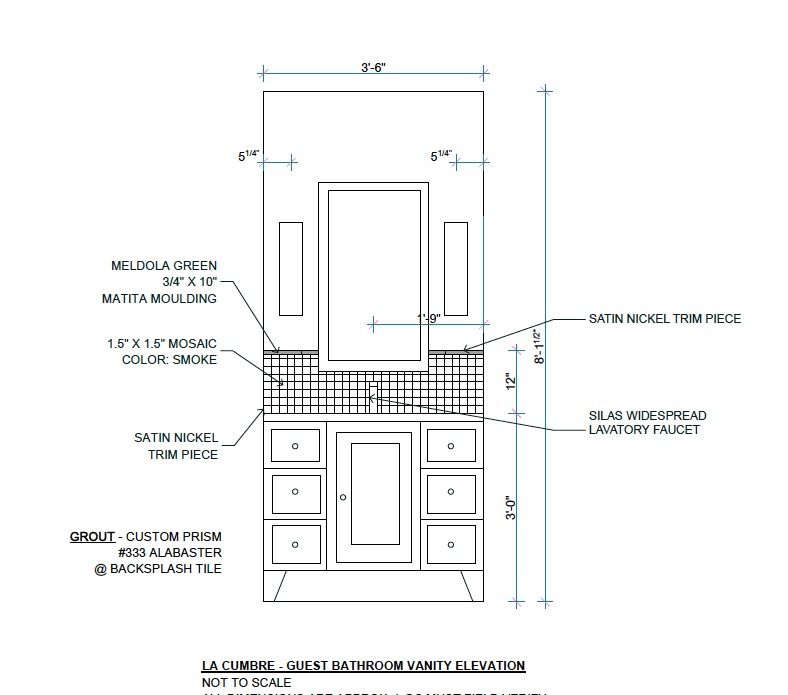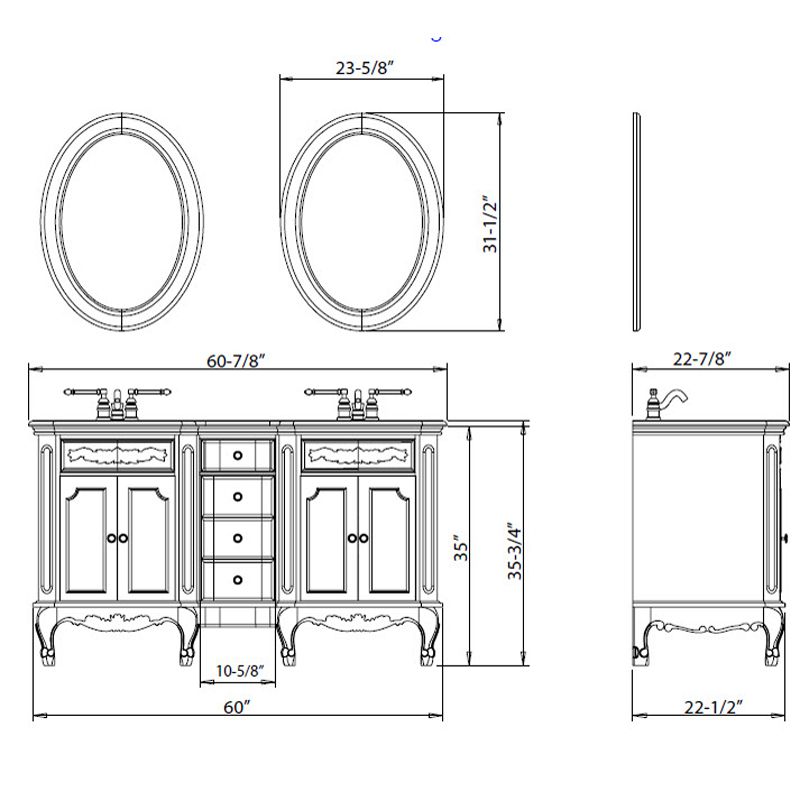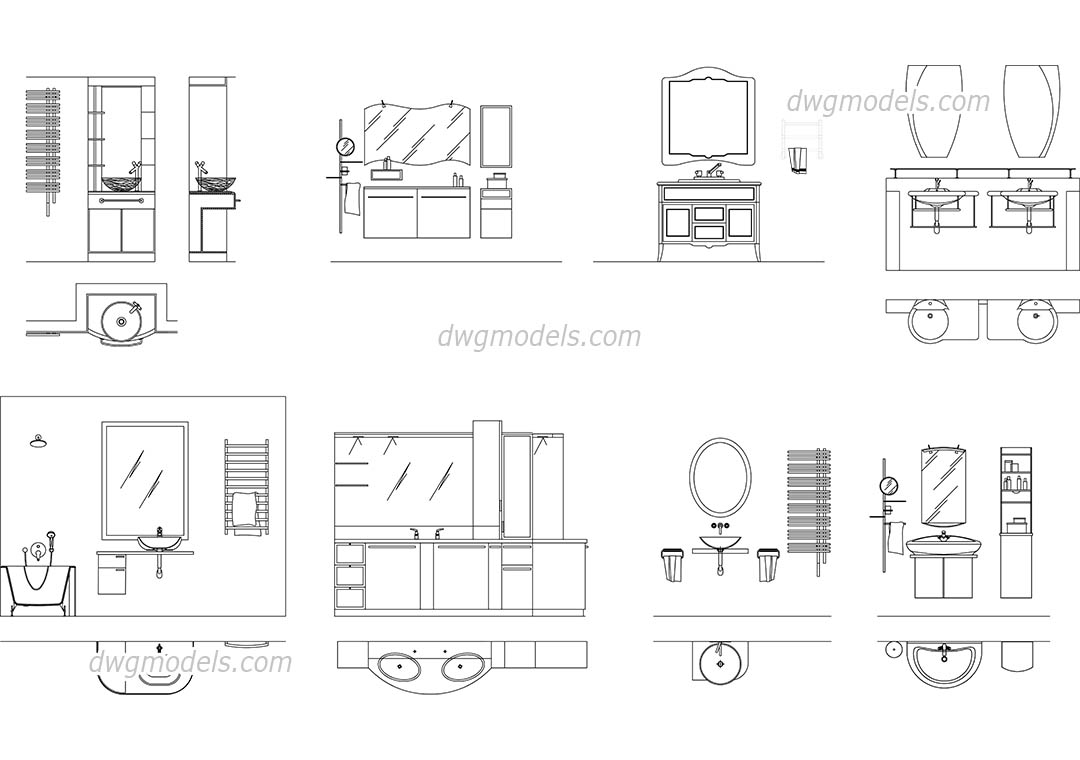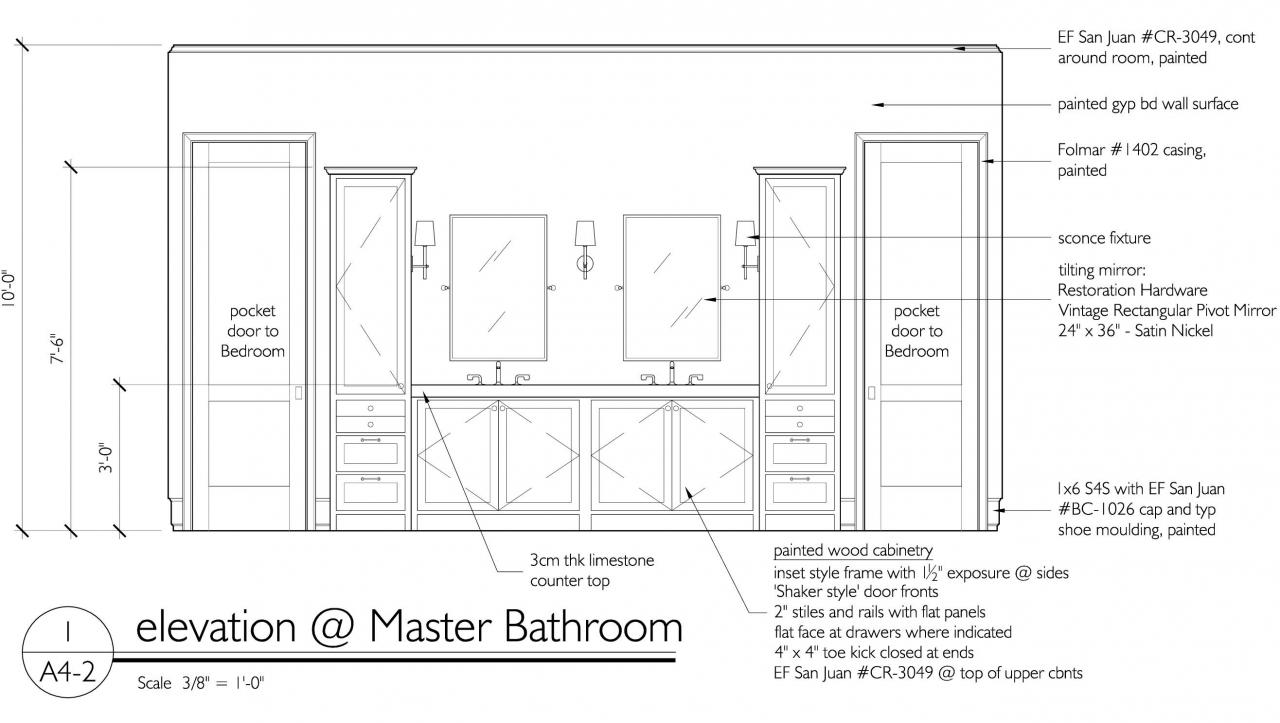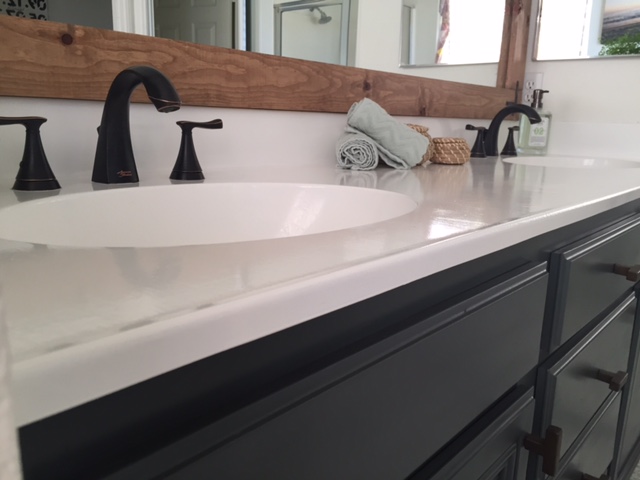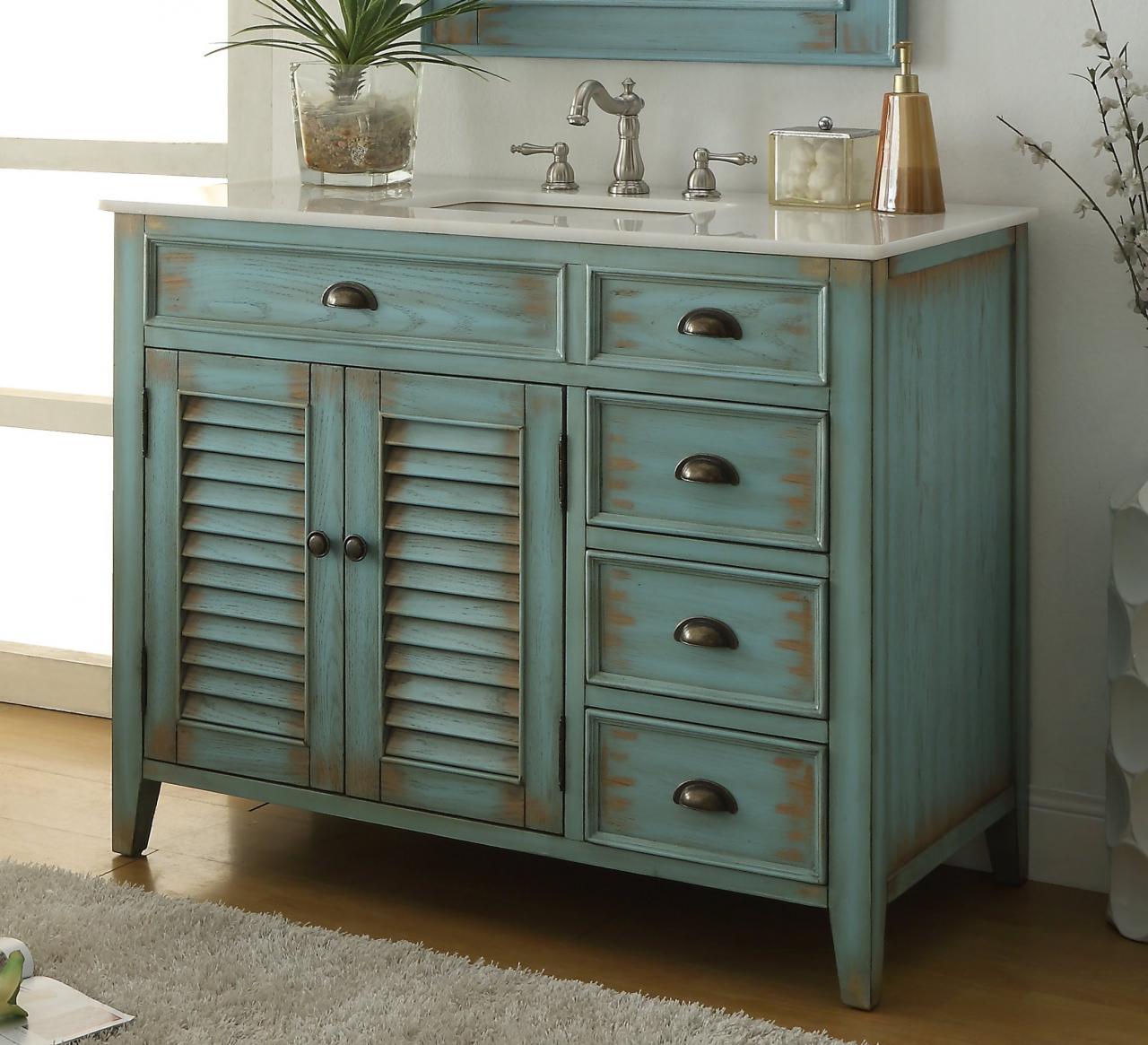The Importance of Bathroom Vanity Elevation
Having a well-designed and functional bathroom is essential for any home. One often overlooked aspect of bathroom design is the elevation of the vanity. Elevating the bathroom vanity can have a significant impact on accessibility and functionality. Here are the importance of bathroom vanity elevation and how it can enhance your overall bathroom experience.
- Improved Accessibility: Elevating the bathroom vanity is crucial for ensuring accessibility, especially for individuals with mobility challenges or disabilities. By raising the vanity to a suitable height, it becomes easier for people using wheelchairs or mobility aids to access the sink and countertops without straining or discomfort. This simple modification can greatly enhance the independence and convenience of individuals with limited mobility.
- Enhanced Ergonomics: Proper bathroom vanity elevation can also improve the overall ergonomics of the space. When the vanity is at the right height, it reduces the strain on the back and neck while performing daily tasks like brushing teeth or washing hands. By aligning the vanity with the user’s body, it promotes better posture and reduces the risk of developing musculoskeletal issues over time.
- Increased Storage Capacity: Elevating the bathroom vanity can create additional storage space underneath. By raising the vanity a few inches off the ground, you can install drawers or shelves, providing a convenient storage solution for towels, toiletries, and other bathroom essentials. This extra storage space helps keep the bathroom organized and clutter-free, contributing to a visually appealing and functional environment.
- Customization Options: Another advantage of bathroom vanity elevation is the opportunity for customization. By raising the vanity, you can choose from a wider range of countertop materials, styles, and designs. This allows you to create a bathroom vanity that perfectly matches your aesthetic preferences and complements the overall decor of your bathroom. Customization options also extend to the choice of faucets, sinks, and hardware, enabling you to create a truly personalized space.
- Aesthetics and Visual Impact: Elevated bathroom vanities have become increasingly popular due to their aesthetic appeal. They create a sleek and modern look, adding a touch of elegance to any bathroom. The raised height draws attention and becomes a focal point, making a visual impact that can transform the entire space. With various design options available, you can choose a style that suits your taste and elevates the overall ambiance of your bathroom.
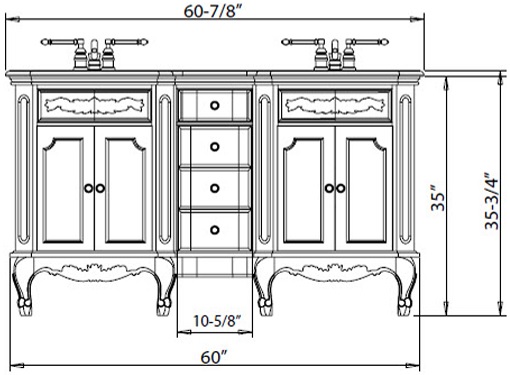
Finding the Perfect Height for Your Bathroom Vanity
When designing or renovating a bathroom, one of the key considerations is finding the perfect height for your bathroom vanity. The height of the vanity plays a crucial role in ensuring comfort and functionality. We will discuss important design considerations to help you determine the ideal height for your bathroom vanity.
User Height and Comfort: The height of the bathroom vanity should be determined based on the average height of the users. A vanity that is too low can cause discomfort and strain on the back, while a vanity that is too high can lead to discomfort while using the sink or countertops. As a general guideline, the standard height for a bathroom vanity is around 32 to 34 inches. However, it is essential to consider the specific needs and comfort of the individuals who will be using the bathroom.
Consideration for Children: If your bathroom will be used by children, it’s important to factor in their height when determining the vanity height. Installing a lower vanity or adding a step stool can make it easier for children to access the sink and countertops. By considering the needs of all users, you can create a bathroom that is functional and comfortable for everyone.
Accommodating Wheelchair Users: If you have individuals using wheelchairs or mobility aids in your household, it’s crucial to ensure that the bathroom vanity is at an appropriate height. The ADA (Americans with Disabilities Act) recommends a knee clearance of at least 27 inches and a maximum height of 34 inches for bathroom vanities in accessible restrooms. Adhering to these guidelines ensures that individuals using wheelchairs can comfortably access the sink and perform daily tasks.
Personal Preference and Style: While there are guidelines for bathroom vanity height, personal preference and style also play a significant role. Some individuals may prefer a higher vanity for aesthetic reasons or due to their height. Others may opt for a lower vanity for a more modern and minimalist look. It’s important to strike a balance between functionality and personal style to create a bathroom that reflects your taste while ensuring a comfortable experience.
Consultation with Professionals: When in doubt, it’s always a good idea to consult with professionals such as bathroom designers or contractors. They have the expertise and experience to guide you in determining the ideal height for your bathroom vanity based on your specific needs and requirements. They can also provide valuable insights into the latest design trends and help you achieve the desired aesthetic appeal while maintaining functionality.
Adapting Bathroom Vanities for People with Mobility Challenges
For individuals with mobility challenges, having an accessible bathroom is essential for maintaining independence and ensuring a comfortable experience. Adapting bathroom vanities to accommodate their needs is a crucial step in creating a fully accessible bathroom. Here are different accessibility solutions that can be implemented to make bathroom vanities more user-friendly for people with mobility challenges.
Lowered Vanity Height: One of the key accessibility solutions for bathroom vanities is to lower the height to accommodate individuals using wheelchairs or mobility aids. By lowering the vanity height, it becomes easier for them to reach the sink and countertops comfortably. The recommended height for accessible bathroom vanity is typically around 27 to 34 inches, allowing for sufficient knee clearance and ease of use.
Knee Space and Clearance: To ensure proper accessibility, it’s essential to provide adequate knee space and clearance underneath the sink. This allows individuals using wheelchairs to maneuver closer to the sink without any obstructions. The ADA guidelines recommend a minimum knee clearance of 27 inches high, 30 inches wide, and 11 to 25 inches deep. By implementing these measurements, you can create a barrier-free space that promotes independence and ease of use.
Lever Handles and Touchless Faucets: Traditional knobs and handles can be challenging for individuals with limited hand dexterity or mobility. Installing lever handles on the vanity drawers and cabinets allows for easy operation without the need for a tight grip. Additionally, touchless faucets can be a convenient solution, eliminating the need to twist or turn handles. These accessibility features make the bathroom vanity more user-friendly and inclusive for everyone.
Adjustable Height Features: In some cases, individuals with mobility challenges may have different requirements depending on their specific needs. Installing adjustable height features in bathroom vanities can cater to these varying needs. Motorized or manually adjustable sinks and countertops provide flexibility, allowing users to adjust the height according to their comfort and accessibility requirements. These features ensure a personalized and adaptable experience for individuals with mobility challenges.
Non-Slip Surfaces and Support Bars: To enhance safety and stability, it’s important to incorporate non-slip surfaces and support bars in the design of bathroom vanities. Non-slip surfaces on the countertops and flooring prevent slips and falls, providing a secure and stable environment. Additionally, installing support bars near the vanity area offers individuals with mobility challenges something to hold onto for balance and support while using the sink or countertops. These safety features are crucial for creating an accessible and user-friendly bathroom.
Elevated Bathroom Vanities for a Modern and Sleek Look
When it comes to bathroom design, elevated vanities have become a popular choice for homeowners looking to create a modern and sleek aesthetic. Elevated bathroom vanities not only add visual interest to the space but also offer practical benefits. Let’s explore the trending styles of elevated bathroom vanities that can transform your bathroom into a stylish and contemporary oasis.
Floating Vanities: One of the most popular styles of elevated bathroom vanities is the floating vanity. These vanities are mounted on the wall, creating a floating effect and giving the illusion of more space in the bathroom. Floating vanities are available in various materials, such as wood, glass, or acrylic, and offer a minimalist and streamlined look. They are perfect for small bathrooms or those aiming for a sleek and modern design.
Vessel Sink Vanities: Vessel sinks have gained popularity in recent years, and pairing them with elevated vanities creates a striking visual impact. Vessel sinks sit on top of the vanity countertop, adding a sculptural element to the bathroom. Elevating the vanity allows for a better display of the vessel sink, making it a focal point in the space. Vessel sink vanities are available in a wide range of styles, materials, and shapes, allowing you to customize the look to suit your taste.
Open Shelf Vanities: For those who prefer a more open and airy feel in the bathroom, open shelf vanities are an excellent choice. These vanities feature open shelves instead of closed cabinets, providing a modern and minimalist look. Elevating the vanity with open shelves allows for easy access to towels, toiletries, and other bathroom essentials, while also displaying decorative items to add a personal touch to the space. Open-shelf vanities work well in both small and large bathrooms, creating a sense of spaciousness.
Industrial-Style Vanities: Industrial-style bathrooms have gained popularity in recent years, and elevated vanities can contribute to this aesthetic. Industrial-style vanities often feature metal frames or legs, combined with raw materials such as wood or concrete for the countertop. Elevating the vanity with metal legs adds an industrial touch to the bathroom, creating a stylish and edgy look. This style is perfect for those who appreciate a blend of modern and rustic elements in their bathroom design.
Customized Designs: Elevated bathroom vanities offer the opportunity for customization and unique designs. You can work with a designer or contractor to create a vanity that perfectly fits your bathroom space and personal style. From choosing the right materials and finishes to incorporating personalized storage solutions, a customized elevated vanity allows you to create a truly one-of-a-kind bathroom. This option is ideal for those who want to make a statement and showcase their individuality through their bathroom design.
How to Elevate Your Bathroom Vanity on a Budget
Elevating your bathroom vanity can make a significant difference in the overall look and functionality of your bathroom. However, you may be concerned about the cost of hiring professionals to do the job. The good news is that with a little DIY know-how, you can elevate your bathroom vanity on a budget. Below we provide you with some helpful tips on how to elevate your bathroom vanity yourself without breaking the bank.
Choose the Right Materials: The first step in elevating your bathroom vanity on a budget is to choose the right materials. Opt for cost-effective options such as plywood or medium-density fiberboard (MDF) for the vanity base. These materials are affordable and readily available at most home improvement stores. Additionally, consider using laminate or inexpensive countertop materials to keep costs down while still achieving a stylish look.
Measure and Plan: Before starting your DIY project, it’s essential to measure the height and dimensions of your existing vanity to determine how much elevation is needed. Take into account the height of the sink, faucet, and any other fixtures that may be attached to the vanity. With accurate measurements, you can plan the design and materials required for the elevation effectively.
Build a Platform or Legs: To elevate your vanity, you can either build a platform or add legs to the existing vanity. Building a platform involves constructing a sturdy base that raises the entire vanity to the desired height. If you prefer a simpler approach, adding legs to the vanity can achieve a similar effect. Use materials such as wooden blocks or metal legs that can be easily attached to the bottom of the vanity.
Secure the Vanity: Once you have built the platform or added legs, ensure that the elevated vanity is securely attached to the floor or wall. Use screws or brackets to fasten the vanity to the platform or legs, ensuring stability and preventing any wobbling or movement. This step is crucial for safety and durability, so take the time to secure the vanity properly.
Paint and Finish: To complete the DIY elevation project, consider painting or refinishing the vanity to give it a fresh, updated look. Choose a paint color or finish that complements the overall aesthetic of your bathroom. This simple step can transform the appearance of your bathroom vanity and give it a polished and cohesive look.
Update Hardware and Accessories: To further enhance the elevated vanity’s appearance, consider updating the hardware and accessories. Replace outdated knobs or pulls with modern and budget-friendly options. Additionally, add accessories such as a new mirror, towel bars, or decorative items to complete the look and tie the elevated vanity into the overall design of the bathroom.
Portland Project: Hall Bath Design + Shoppable Moodboard – Emily
NEW GUEST VANITY ELEVATION Guest bath, Guest suite, Redesign
What is the Standard Height of a Bathroom Vanity
IKEA Hemnes / Odensvik Double Vanity – 2 Drawers Dimensions
Modern Wall Mounted Single Bathroom Vanity Dimensions
Lavatory and bathroom elevation DWG, free CAD Blocks download
Pin on Bathrooms
Related Posts:
- Counter Height Bathroom Vanity Stool
- L Shaped Bathroom Vanity Suite
- Bathroom Vanity Tops Double Bowl
- 80 Inch Double Sink Bathroom Vanity
- 36 Inch Grey Bathroom Vanity
- Tropical Bathroom Vanity Lights
- 36 Inch Bathroom Vanity With Sink
- Bathroom Vanity Wall Cabinets
- Elegant Bathroom Vanity Mirrors
- 39 Inch Bathroom Vanity

